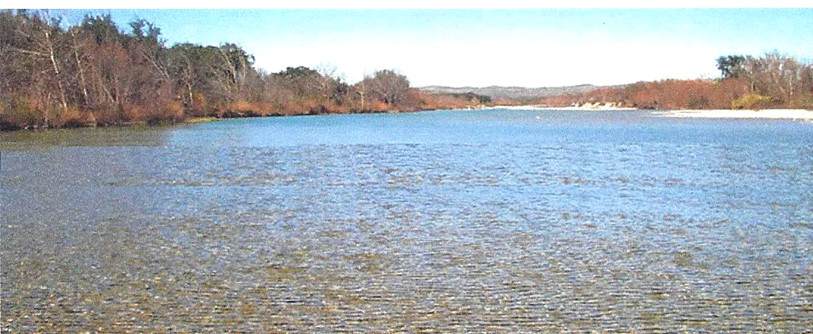|
Chapter
4
Early
years in Nueces County
Jane’s husband began his legal profession right away and from 1858
through 1861, he stayed employed at the firm of W. Hess Jones and James
A. Ware Attorneys.
By 1859, “residents
in need of legal counseling could choose between lawyers Charles
Lovenskiold, James Ware, William O’Docherty, and Walter Merriman.” (Ref. 3004)
Frances Glassell Ware
Photo owned by James & Judy Ware
On
June 11, 1859, their little family grew as Jane gave birth to their
first child - a daughter named Frances Glassell Ware. Her birth
record shows her place of birth as Corpus Christi. In 1860, the
Nueces County census shows the Ware family taking in a boarder, William
O’Docharty, who was their same age. William was a lawyer too, and
it was common practice to open your home to boarders if they needed a
temporary place to stay.
53

 Census
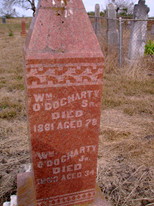 Grave for William O’Docharty
Grave for William O’Docharty
By this time, the Wares were comfortably established in their Texas
home. Boundary lines had changed between Nueces County and San
Patricio County around 1858, but by 1860, things were settled
off. Although he worked in town, James had been able to build his
ranch (with the help of his slaves) on land which was located twelve
miles above San Patricio, on the Nueces River. Therefore, after
the boundary adjustments, his land was then registered in Nueces
County. Although slavery was not widespread in the area, “in the case of one married couple, lawyer James Ware owned two slaves while his wife, Jane, had three of her own.” (Ref. 3004)
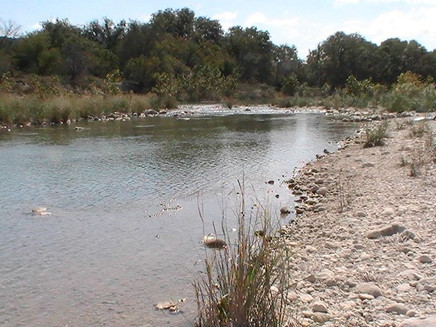
Nueces River
Practically every substantial person in the county had a cattle brand and “the ownership of a brand was something to be proud of.” (Ref. 3296) James was no different.
54

Cattle and horse brand registered for James A. Ware

1860 Nueces County Census (Ref. 2751)
The Wares spent a lot of time between their home in Nueces County and
Galveston, where they often stayed with Jane’s parents or her Uncle
William. James’ legal practice, which dealt with money
collections made in western Texas and business transactions dealing
with the purchase or sale of lands, often meant traveling for him -
with Galveston being a frequent destination. It was nice to have
relatives to stay with. Jane, always close to her parents, must
have loved being able to share her young daughter with doting
grandparents while James conducted his business.
Things were heating up on the political front in the country though,
and the threat of war seemed ever imminent. In 1859, “Mat
Nolan, sheriff of Nueces County, was authorized to raise a company of
cavalry. Nolan’s Mounted Rangers, 98 strong, mustered at
Banquete. They volunteered to serve six months, long enough, they
thought, to win the war. Other companies mustered at Corpus
Christi included W.S. Shaw’s Light Infantry, James Morgan’s Infantry
Company, John Graham’s Mounted Coast Guards, James A. Ware’s Partisan Rangers, and the Corpus Christi Artillery Company.”(Ref. 578)
This military organization was known as the Corpus Christi Guards, and
James was elected as a 1st Lieutenant. He quickly rose to the
rank of captain.
55
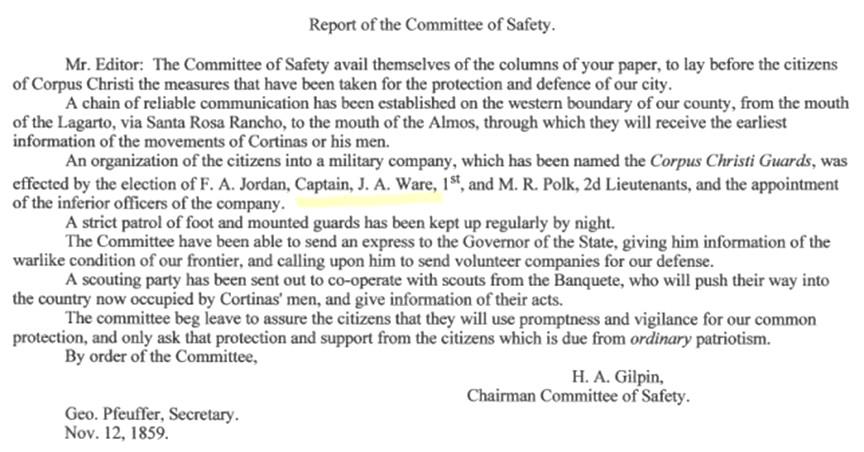
(Ref. 578)
“Later in the war, members of all the reserve companies appear on the muster rolls of B. F. Neal’s Artillery Company and James A. Wares’s Partisan Rangers, both of which were stationed at Corpus Christi.” (Ref. 3240)
Even with political turmoil mounting, Nueces County was growing rapidly. “Tax
rolls in 1848 reported only 647 cattle and nineteen horses. By 1860,
however, records showed 56,454 cattle and 8,554 horses and mules worth
an estimated $489,520. Farming was not extensive and was only for
subsistence.” (Ref. Handbook of Texas)
According to the local newspaper from Corpus Christi called “The
Ranchero,” James decided in 1860 to expand his ranch so that it
included sheep - starting with prime stock that he had sent down from
his father’s plantation in Virginia. The paper recorded that, “sheep-raising
in Western Texas has been attended with the most flattering results,
and those engaged in this profitable pursuit are constantly improving
their flocks with the choicest breeds that can be obtained.” (Ref. Ranchero Oct. 20, 1860)
On October 27, 1860, the following article appeared with greater
details on James’ new investment. His father, Josiah Ware, had
long since gained a reputation as one of the finest breeders in
Virginia. His Cotswold sheep had won about every agricultural
prize they could.
56

With
the arrival of his new stock and his legal business doing well, the
year 1860 proved to be a profitable one for James and Jane. As
one writer quoted in The Ranchero:
“Texas is a great, beautiful, dry, windy, cotton, cattle, Methodist,
live-oak State,” and the Wares were putting down solid roots in this
new soil. However, things were about to turn upside down for them
and the entire country.
Nueces
The broad, clear Nueces River
flows southward and parallel to the Rio Grande, outlining the
once-treacherous area known as the ‘Nueces Strip.’ (Ref. 756 Photo by Susan Dial)
57
58
|


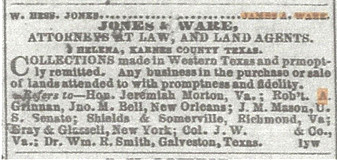
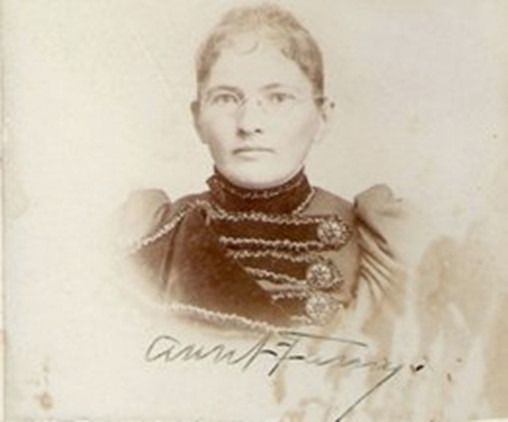

 Census
Census




